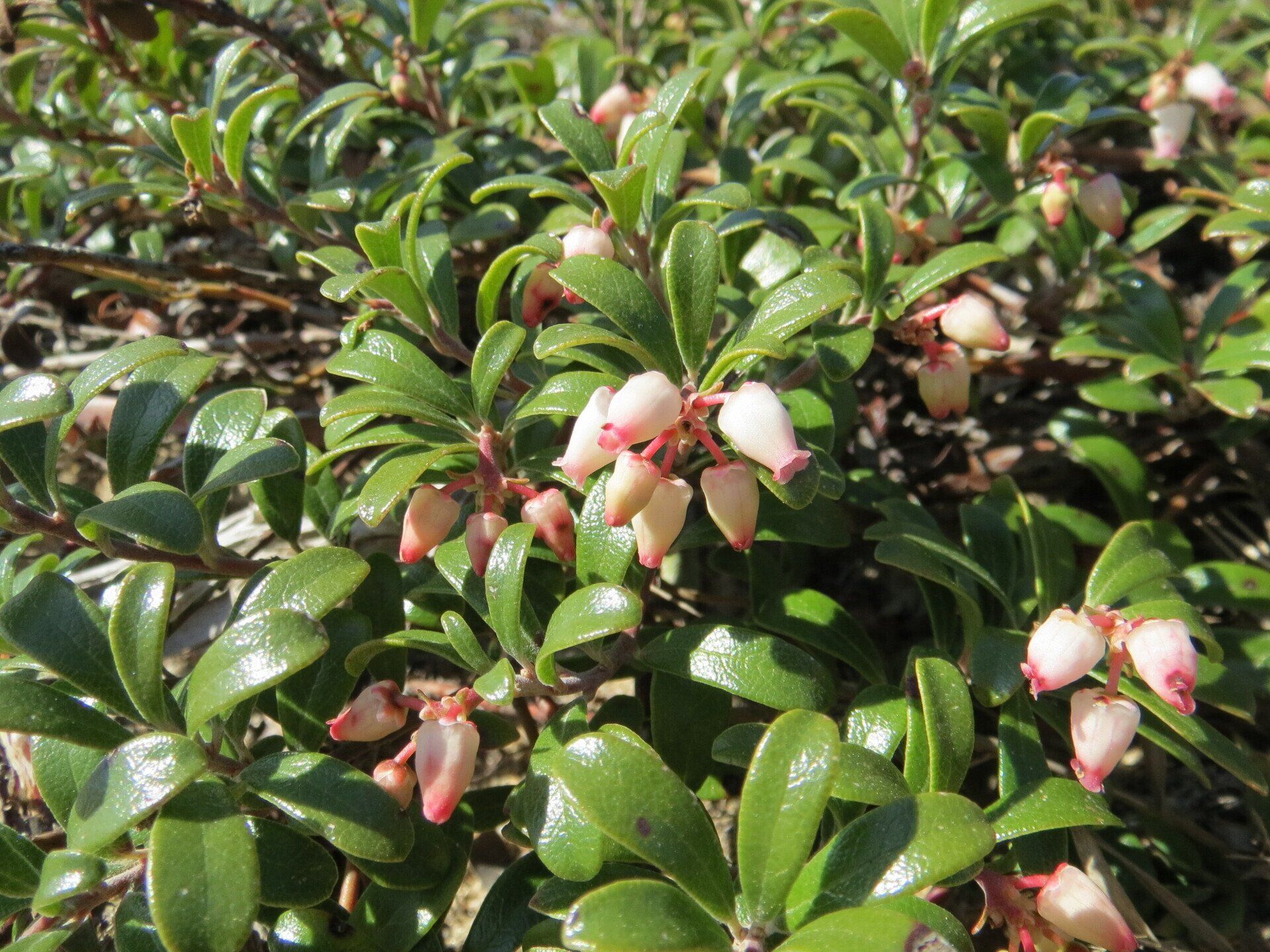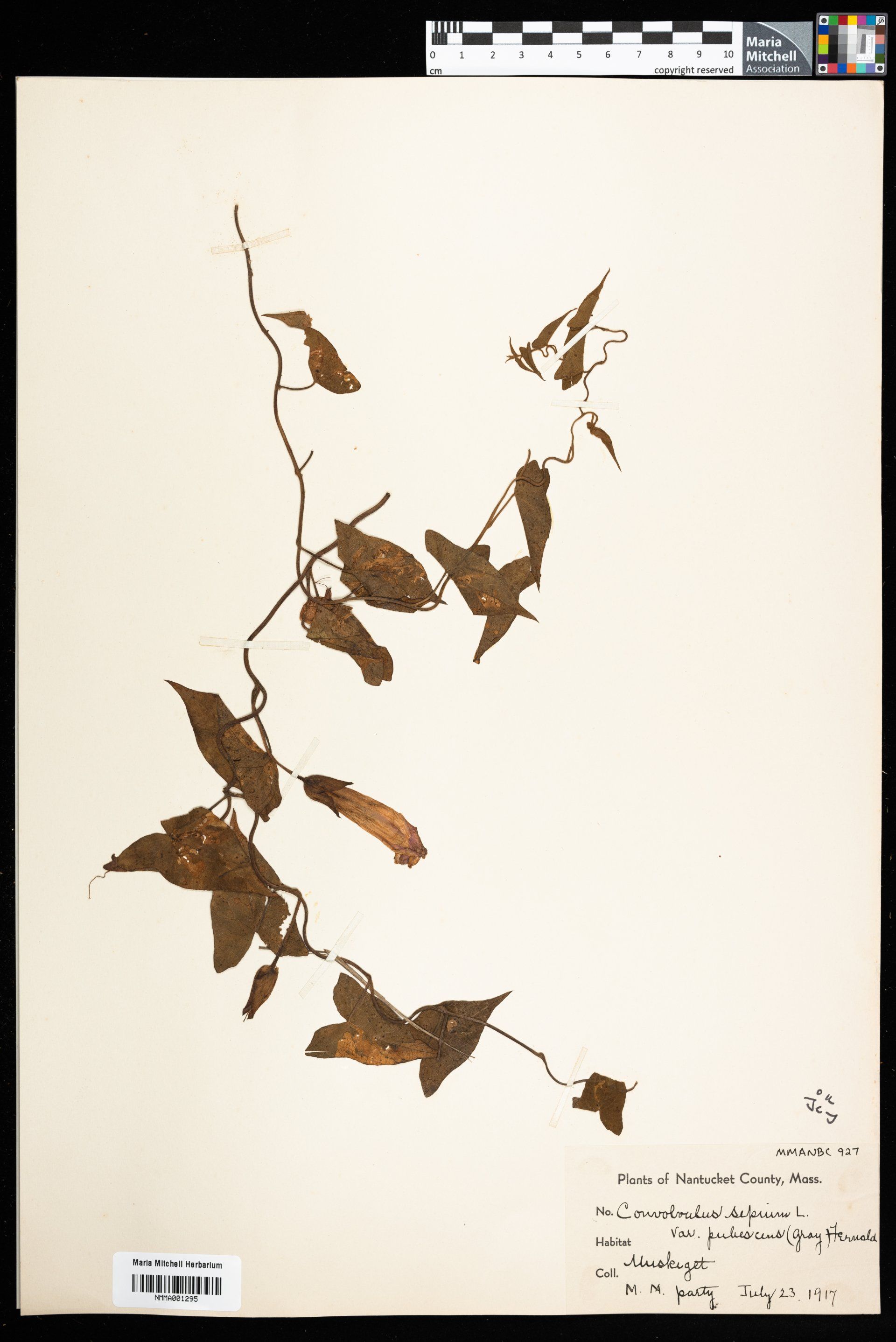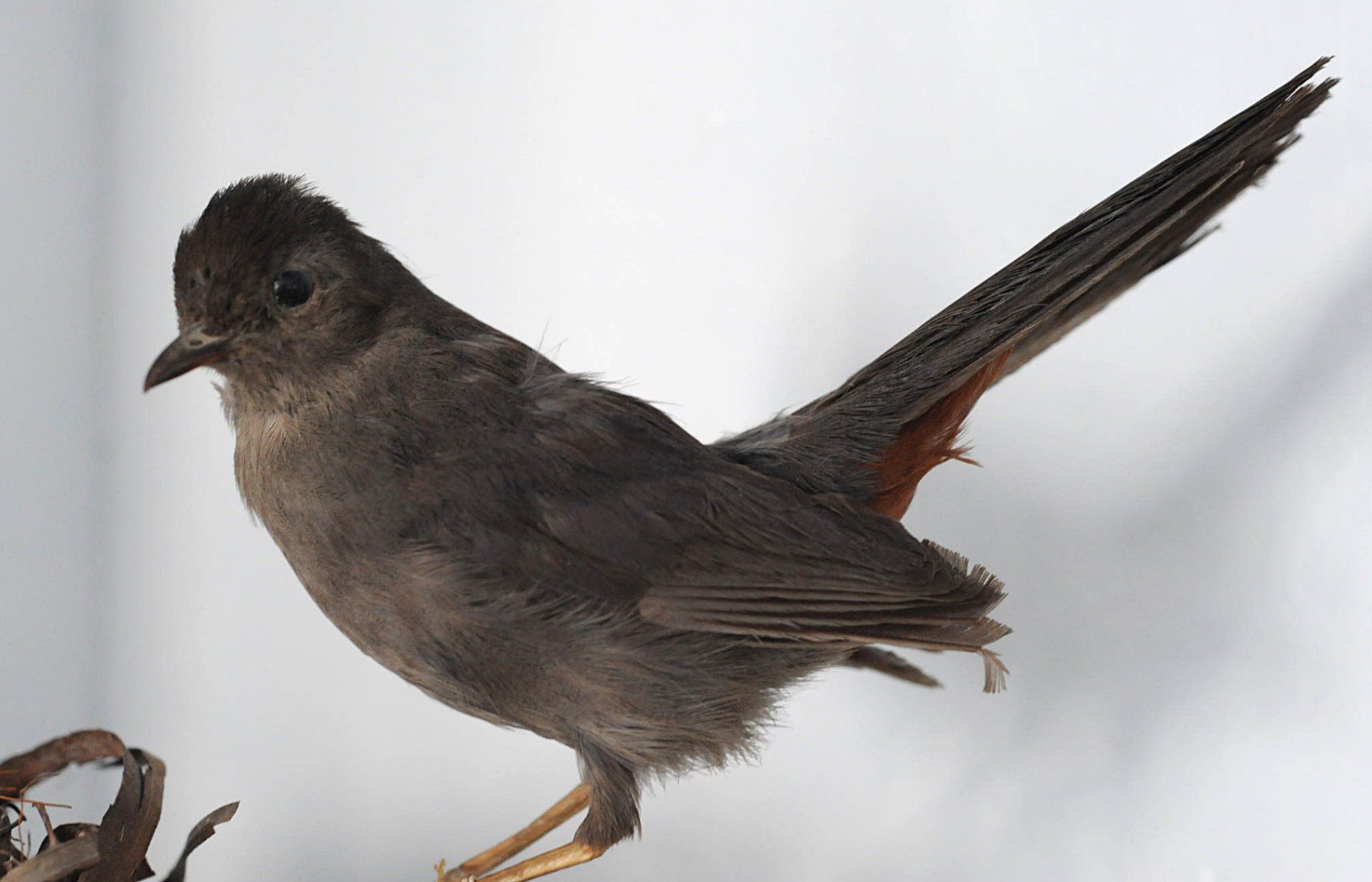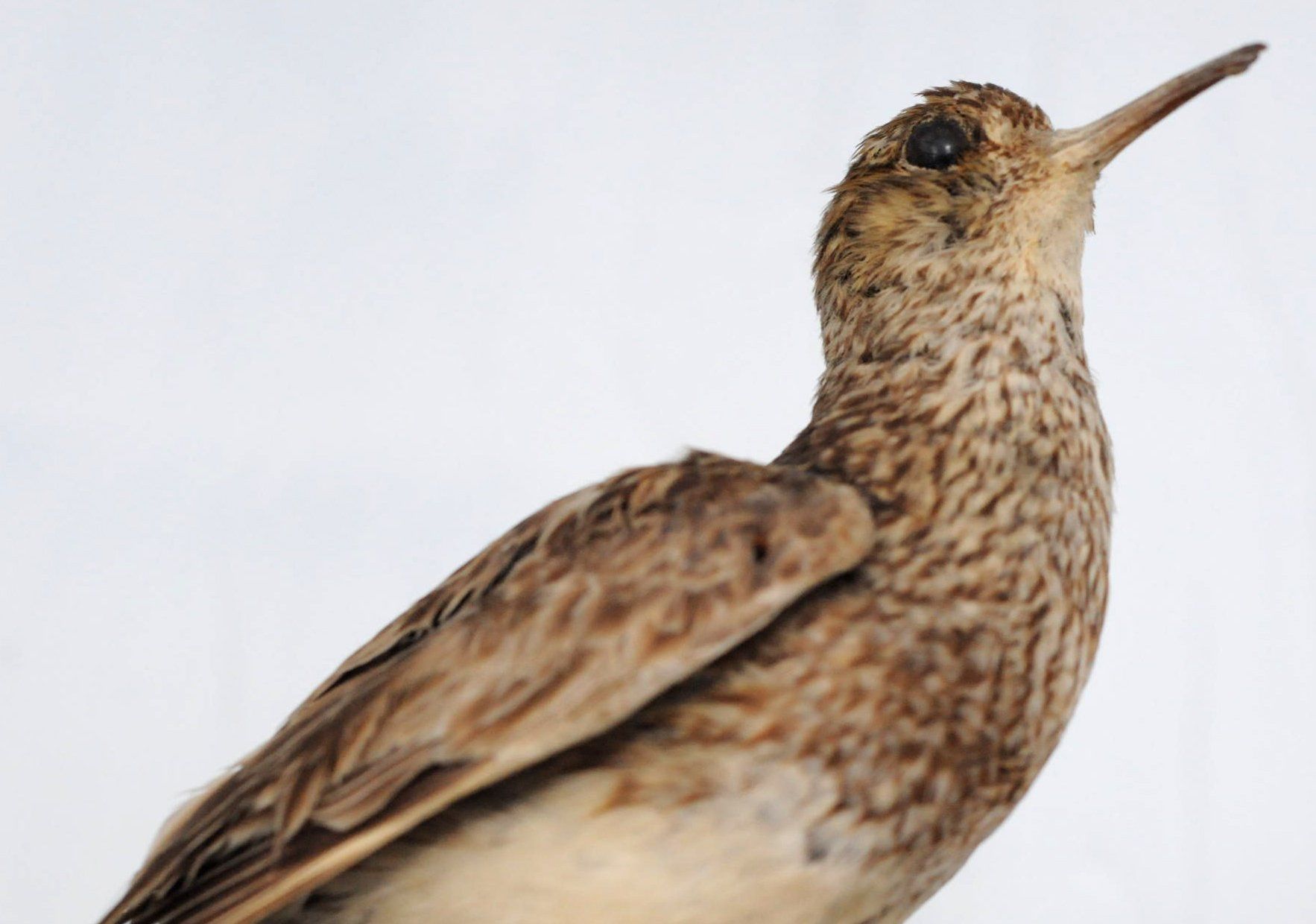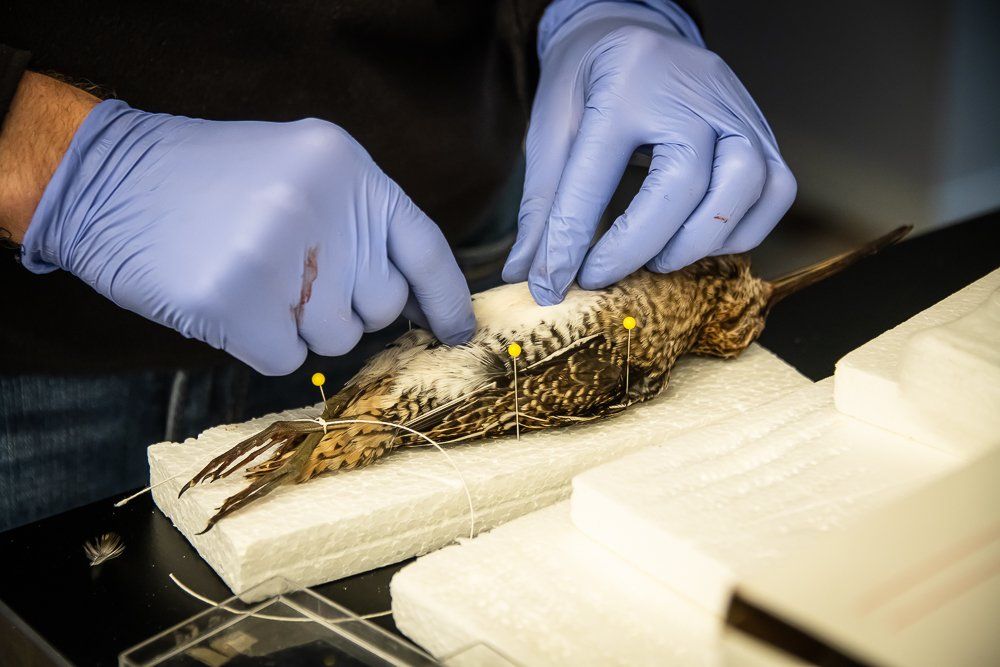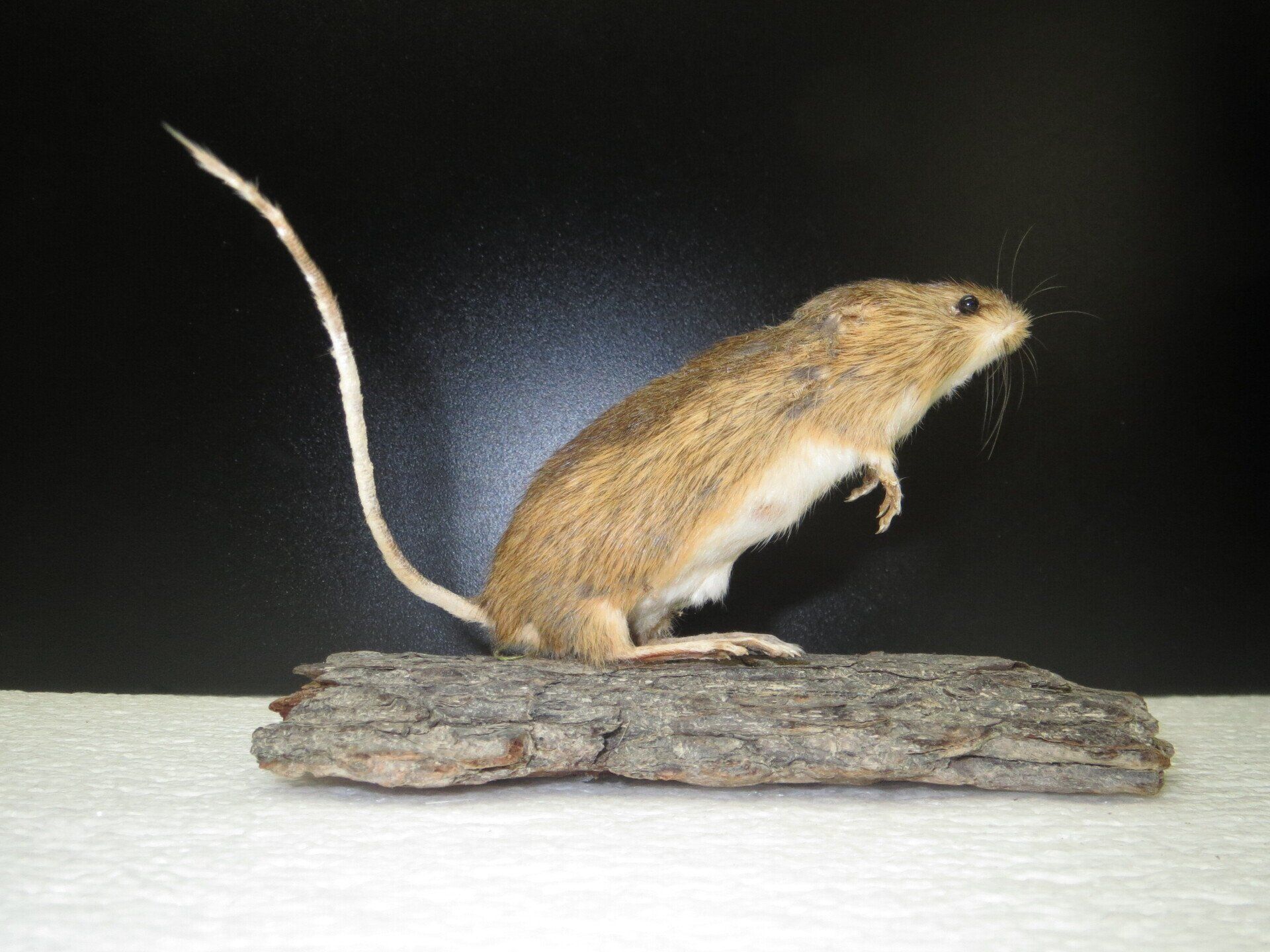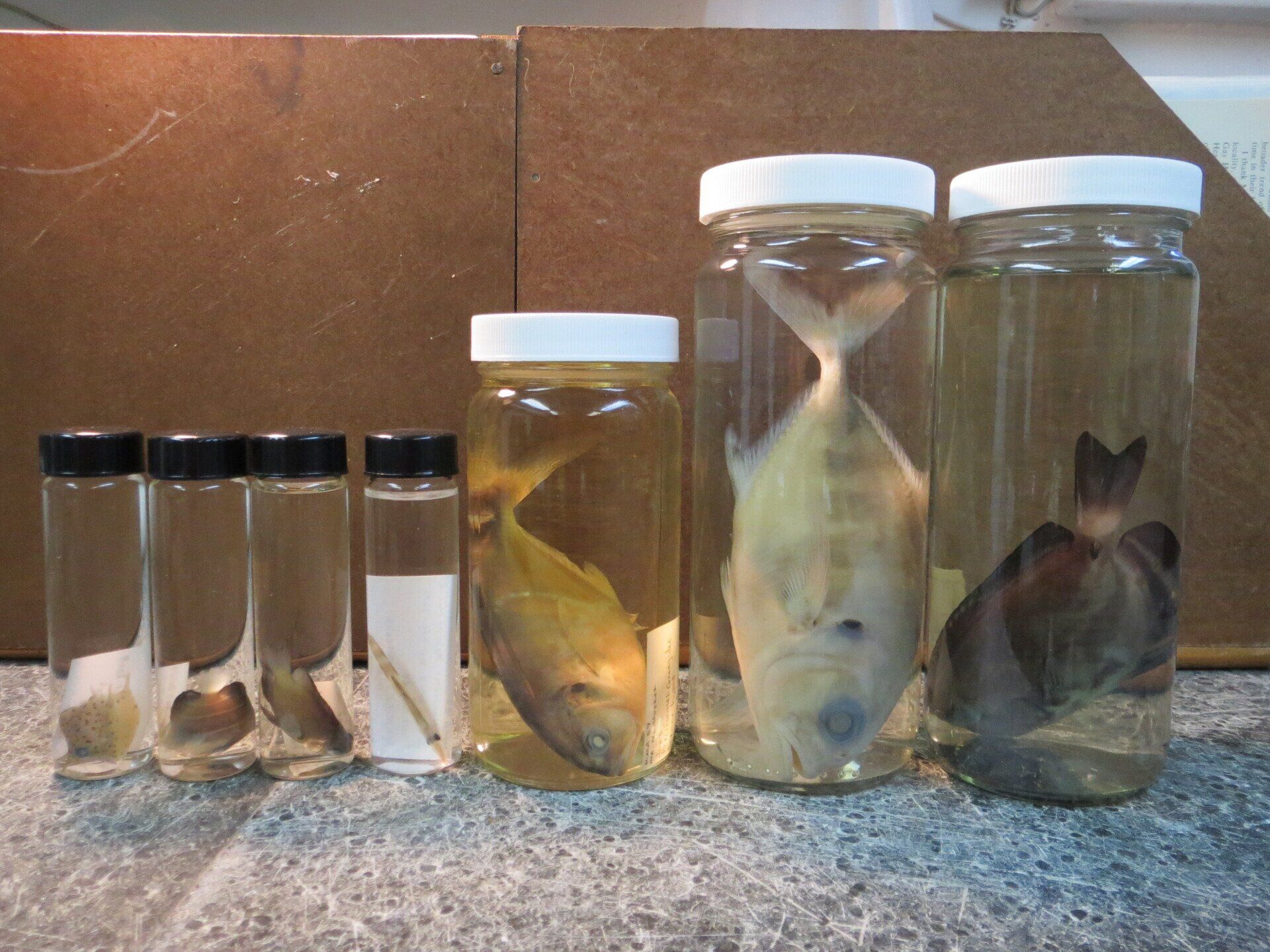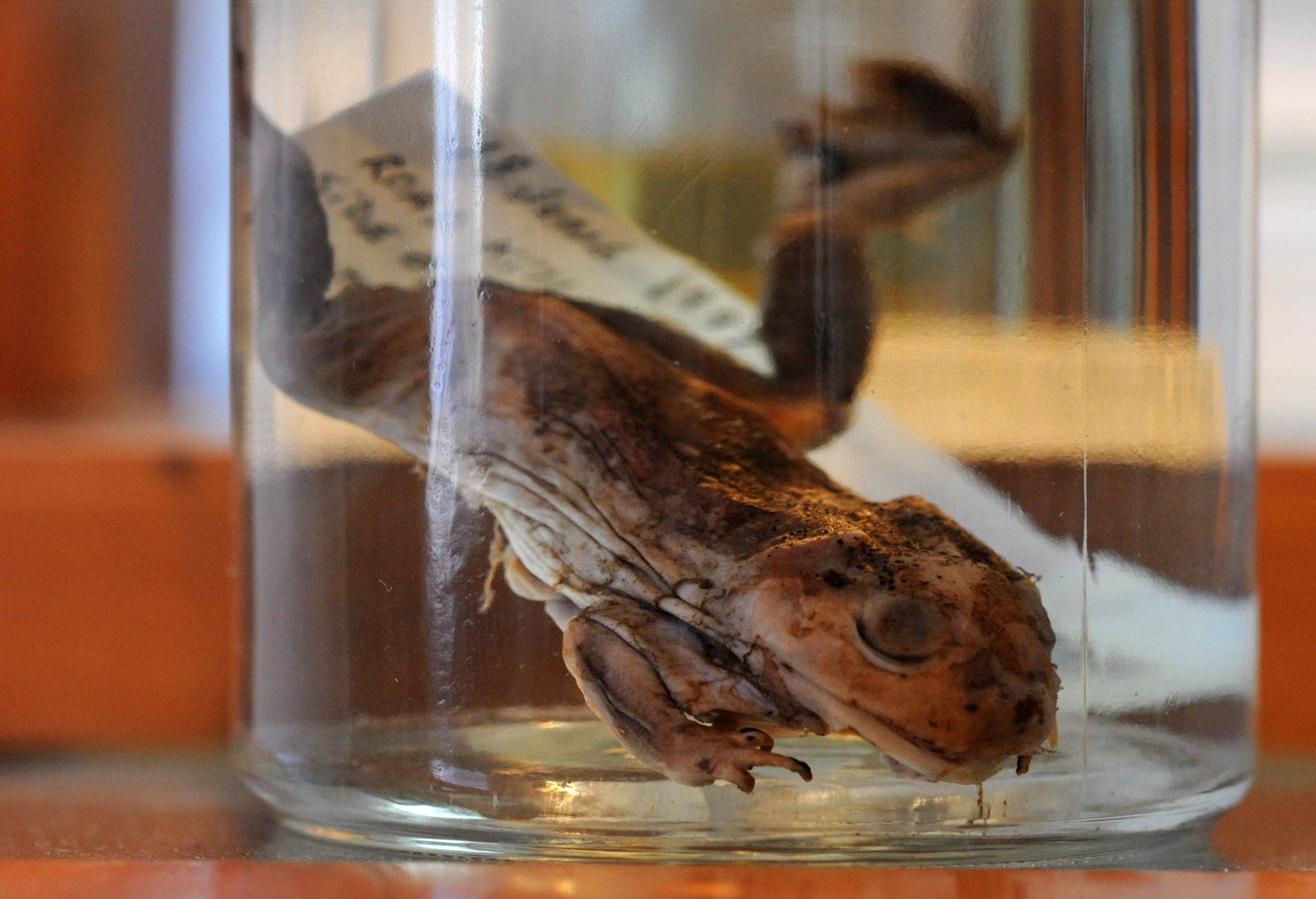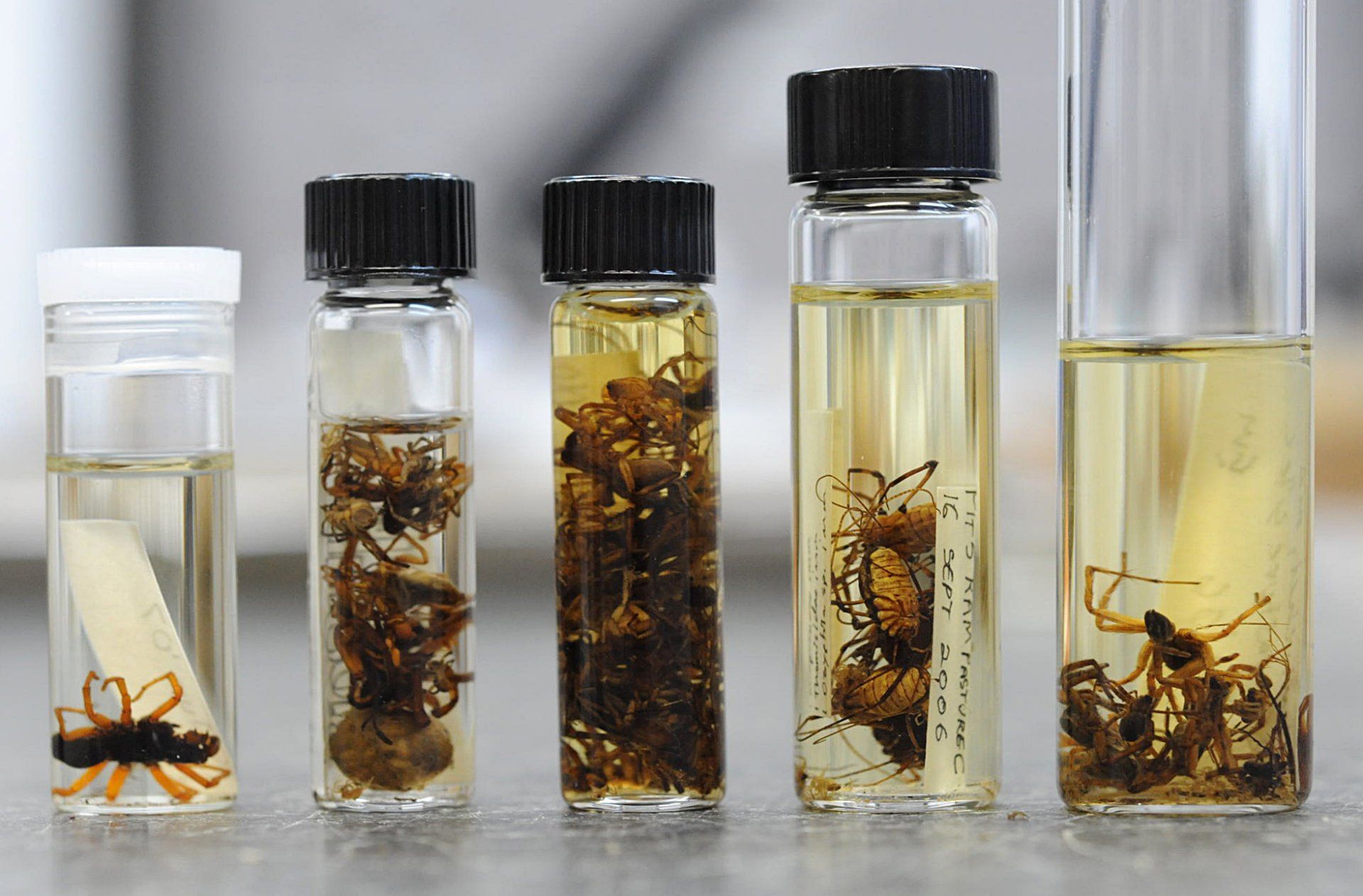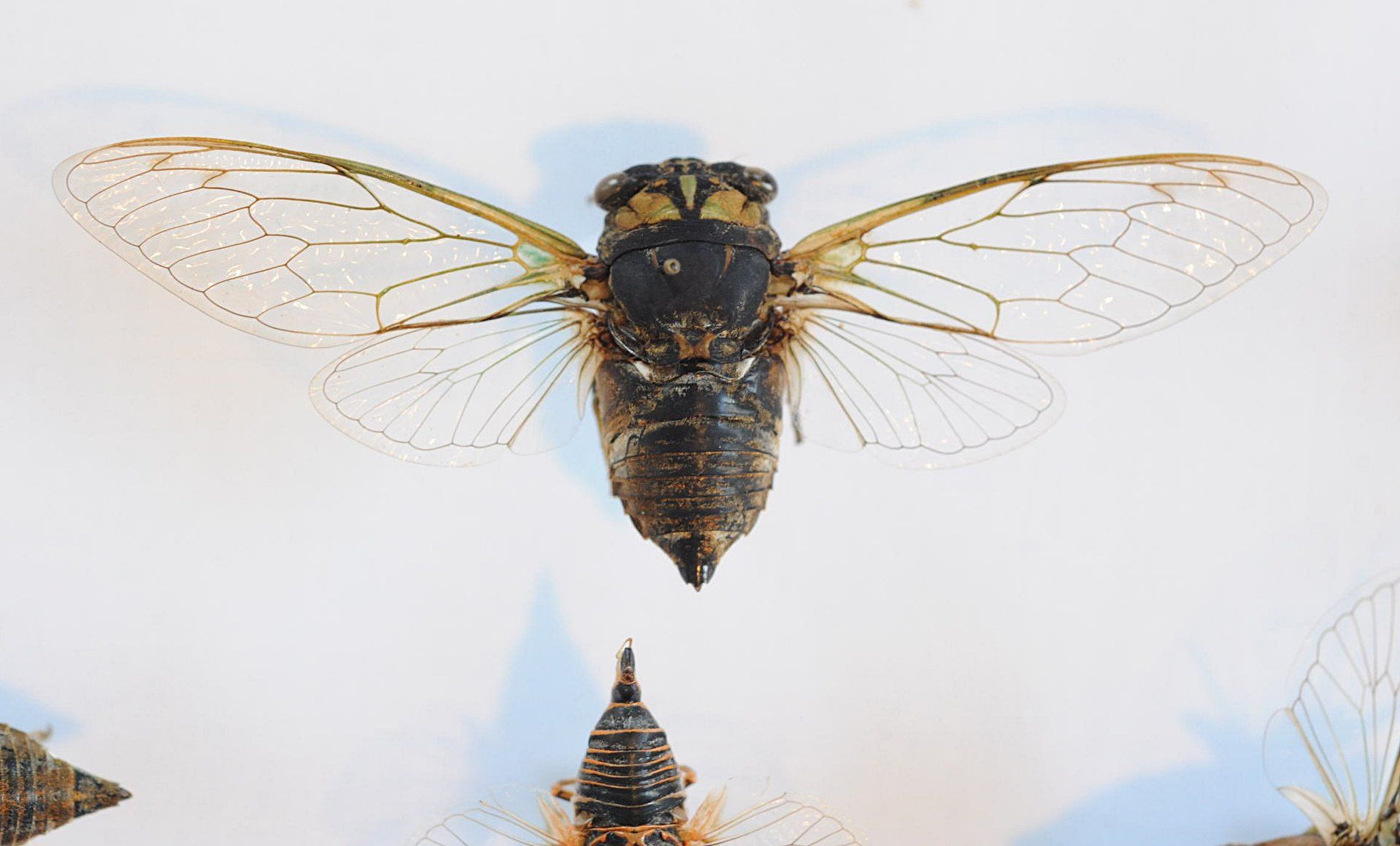COLLECTIONS
Natural Science Collection
The Maria Mitchell Natural Science Museum is a repository for important scientific specimens from Nantucket, Tuckernuck, and Muskeget Islands. The Museum contains plants, algae, fungi, birds, fish, mammals, reptiles, amphibians, invertebrates (insects, spiders, other land/ aquatic arthropods and marine invertebrates), shells, rocks, and fossils. Some of these collections were started more than a century ago, and thus, not only do they represent important local species records, but they also document how the species composition has changed throughout recent history.
The Nantucket Biodiversity Initiative has designated the MMA as the official repository for all specimens collected as part of any associated projects. Project data and reports are available on a digital repository: https://zenodo.org/communities/nantucketbiodiversity
Most of our collections are recorded in a database, but do not have images associated. Some collections do not have digital records associated with them. For a list of specimens of a particular group or to access the collections for research or education, please email info@mariamitchell.org.
Permission to Publish Images
Images from, or of, our Natural Science collections may potentially be utilized by students, researchers, and publications. The following are the steps to be taken for requesting the use of an image.
An email request along with a completed Natural Science Collections Use Form (PDF) to our Executive Director Joanna Roche at jroche@mariamitchell.org.
Once your request is evaluated, you will be sent an email from an MMA representative with the status of your request. The Nantucket Maria Mitchell Association retains the right to reject a submitted request. Only after the permission is granted may images be published.
The image(s) reproduced from the MMA Natural Science collection is for a one-time, non-transferable use in one format. Should the image need to be re-used, a request must again be made. All reproductions must include proper citation, provided in the Natural Science Collections Use Form (PDF).
For any questions, please email: info@mariamitchell.org or call our office at 508-228-9198.
OUR COLLECTIONS INCLUDE
Herbarium (plants)
Our Herbarium (plant collection) is our oldest and most frequently used collection. Our oldest specimens were collected in 1878, and additional specimens have been added every decade. The herbarium is an actively used collection sought out by botanists in order for them to determine species ranges and distributions, monitor rare plant populations, and uncover genetics of dispersal and trait divergence in our island populations. This collection includes 5,775 pressed plant specimens representing 1,697 species (or varieties), all from Nantucket. Our main collections have been digitized and are now searchable on the Consortium of Northeastern Herbaria web portal.
A later donation of specimens from Wes Tiffney (a professor at the UMass Field Station in the 1960s-70s) has been imaged, and we are just putting together a citizen science project for help transcribing data labels on the crowdsourcing platform Zooniverse. This collection has 2,058 specimens, mainly collected between 1960-1980 on Nantucket and throughout coastal New England. Additionally, there is an algae collection with at least 846 specimens.
Trees and Shrubs of Nantucket 2nd Edition
In 1946, the Maria Mitchell Association published a book containing a narrative description of the trees and shrub history for Nantucket Island, Massachusetts, along with a list of references, a dichotomous key, and a list of tree and shrub species. A second edition was published in 1967.
The Vascular and Non-Vascular Flora of Nantucket, Tuckernuck, and Muskeget Islands
In 1996, botanists Bruce Sorrie and Peter Dunwiddie published The Vascular and Non-Vascular Flora of Nantucket, Tuckernuck, and Muskeget Islands using our herbarium sheets as a primary reference, and adding to the collection with new vouchers in the process.
Edith F. Andrews Ornithology Collection (birds)
The bird “study skins” in our collection were found dead, whether through a run-in with a car or cat, a miscalculation with a window, or a difficult winter. While unfortunate for the bird, their passing is a wealth of information for researchers. Their skin is specially prepared to be preserved in the museum, and we gather data on their health and diet by examining their bodies and stomach contents. Our “study skins” have been used to learn about and illustrate plumage changes as birds molt and age, examine the different sizes of male and female hawks, and as models by local artists.
The bird collection was named after Edith Andrews, former long time curator and ornithologist for the MMA. Edith prepared 645 of our bird specimens between 1945-2004 (we have approximately 1300 bird study skins to date). Our bird collection also contains about 200 taxidermied bird mounts donated to us; these were collected around the turn of the century, and many are missing precise data, but the oldest with known data were collected in 1883.
For our full ornithological database, please see
this document.
Special thanks to Ken Blackshaw for creating photographs to accompany some of our specimens, which can be viewed
here.
For a recent list of bird species in Nantucket, please see
this document.
A Preliminary List of the Birds of Nantucket
In 1928, the Maria Mitchell Association published a book with a list of bird species known from Nantucket Island, Massachusetts based on museum specimens and the author's observations. There are also observation notes for many of the species.
Mammalogy Collection (mammals)
One of Nantucket’s features as an island is that it is not home to any mammalian predators (raccoons, foxes, coyotes, bobcats, mink, weasels, etc.), but we do have a raccoon and fisher represented in the collection as these animals were found washed up on the beach. A list of 21 Nantucket mammals was compiled in 1980 by Clint Andrews and MB Epstein. Additional bat species have been added to the list since then. In addition to classical study skins and skulls, our collection also includes the bones of marine mammals such as seals, dolphins, and whales that have been found on Nantucket beaches. The oldest specimen with data dates to 1958.
Mammals of Nantucket County
In 1980, a report with a list of mammal species for Nantucket Island was created based on observations from Clinton Andrews, Mark B. Epstein and Edith F. Andrews, as well as museum specimens at the Maria Mitchell Association. It was never formally published. It lists 21 species and contains notes on the origin of the species (native or introduced)
Ichthyology Collection (fish)
This collection includes 155 specimens representing 103 species. The oldest specimen dates to 1949.
For our full ichthyological database, please see this document.
Herpetology Collection (reptiles & amphibians):
This collection includes 26 reptilian specimens representing 10 species and 10 amphibian specimens representing 5 species.
Nantucket is home to; 6 species of snakes (Eastern garter snake, Eastern ribbon snake, ring-necked snake, Northern water snake, smooth green snake, and milk snake); 4 species turtles (common snapping turtle, painted turtle, spotted turtle, and box turtle); and several other species of turtles have been found in the wild but are not believed to have populations on island (including red-eared sliders).
Amphibian diversity is similarly low on island; there are breeding populations of green frogs, bullfrogs, and spring peepers with historic reports of Eastern spadefoot toads, Fowler’s toads, and recent sightings of gray treefrogs and Cuban treefrogs; Red-backed salamanders are widespread, and of Four-toed salamanders were first noted on Nantucket in 2014.
For our full reptilian database, please see this document. For our full amphibian database, please see this document.
Arachnology Collection (spiders)
Maria Mitchell Association staff have been collecting spiders since 2006 and have accumulated more than 6,000 specimens representing about 250 species from Nantucket, Tuckernuck and Muskeget Islands (identifications are on-going). We try to answer several research questions: How many species live on the Islands? How does prescribed burning affect spiders? How do changes in Nantucket plant communities affect spider diversity?
This collection has 533 specimens representing 234 species. The oldest specimen dates to 1919, with 74 specimens collected between 1919-1930 and 438 specimens collected between 2006-2018.
For the full list of spiders on island and our arachnological database, please see
this document.
Entomology
There are about 800 specimens catalogued in this collection, which will likely more than double as we continue to database this collection. The backbone of the MMA entomology collection was assembled in the early 1900s by Howe (Odonates- dragonflies & damselflies), Jones & Kimball (Lepitopterans- moths & butterflies), and Charles Johnson (all groups, specializing in Diptera- flies), with the specimens that support their published lists.
In the summer of 1917, R. Heber Howe Jr. Surveyed dragon and damselflies of Nantucket. He compiled this list based on both his collections and the collections of others and published it in the 1918 annual report of the Maria Mitchell Association.
Please check back for a document with the completed database, or contact our Collections Manager for more information.
The Dragon and Damsel-flies (Odonata) of Nantucket, Mass.
The publication consists of a short description and a list of 21 species.
A List of the Insect Fauna of Nantucket, Massachusetts
Charles Johnson’s A List of the Insect Fauna of Nantucket, Massachusetts, published in 1930, includes 2,317 species of insects, most of which he and collected and identified from 1926-1929. This is the seminal publication that we are still using as a primary reference almost a century later.
Additional recent collecting has mainly been through Nantucket Biodiversity Initiative projects, including collections of bees, moths, dragonflies, grasshoppers, and leaf-miners, as well as incidental collecting of beetles and other groups.
Please check back for a document with the completed database, or contact our Collections Manager for more information.


